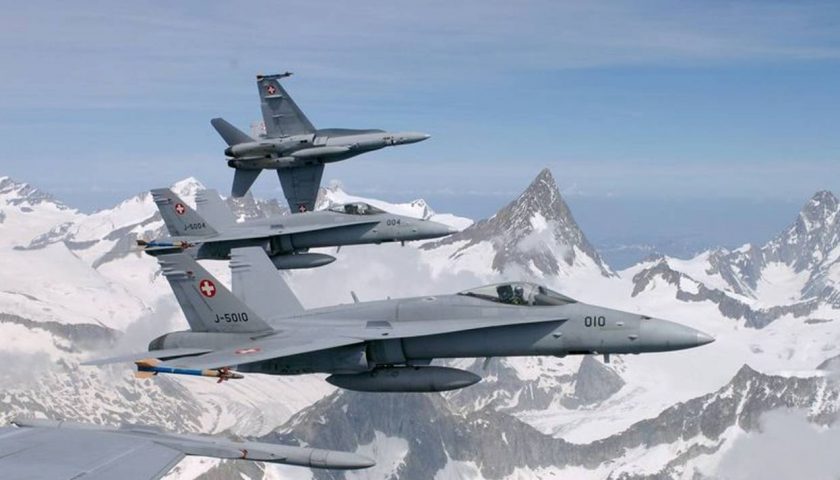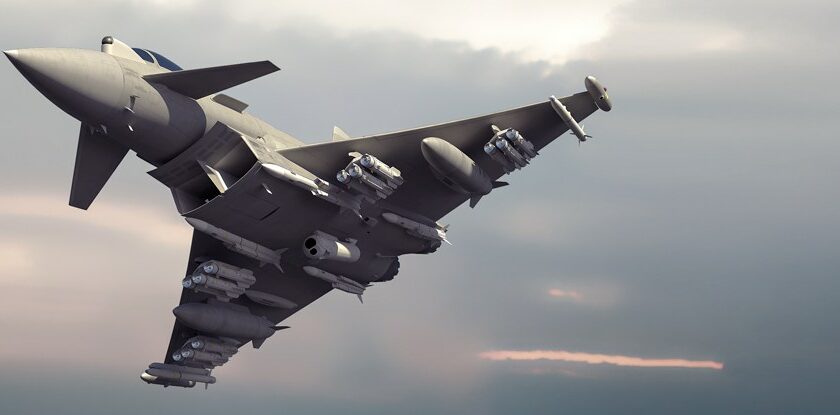Mandated by the Swiss Socialist Party, the American think tank Acamar Analysis and Consulting presented its conclusions regarding the current program aimed at modernizing the country's air and anti-aircraft capabilities led by the Federal Department of Defense (DDPS). The vision proposed by Michael Unbehauen, a former US Air Force officer who directs the Think Tank, is however astonishing, not to say questionable, as are the conclusions that flow from it.
An erroneous starting point
First of all, the initial postulate put forward by the analysis is none other than the absence of a threat in the short or medium term for the Swiss Confederation. It is true that the country was spared from the great conflicts of the 20th century, thanks to a position of absolute neutrality, and privileged relations with many German industrialists. However, nothing allows us to make this a postulate, particularly when we consider the risks of conflagration which would effectively bring the threat close to the country.

Thus, it could be tempting, for a NATO adversary, to use Swiss airspace to carry out operations to penetrate the Alliance's defensive system. And if the Swiss air forces are unable to oppose it, it will be NATO forces who will have to secure these skies, making the country.. a target. In addition, the Swiss economy is today significantly intertwined with that of its neighbors, 3 of which are members of NATO. The country can therefore be targeted to neutralize, for example, lines of communication, sources of supply, or more generally, targets of high value for one of these same neighbors. Without even talking about a direct threat to the country, assuming an absence of threat reveals either a lack of global vision or a lack of objectivity.
It is likely that the format and architecture chosen to ensure all of its missions by the Swiss air forces take into account these extended threats, and not just a vision limited to direct threats in the short and medium term.
The scope of the mission poorly defined
In the approach proposed by the American Think Tank, the perimeter considered is limited to air defense missions, which is far from representing the perimeter of a global air force. Remember that Switzerland does not belong to any Defense alliance, in order to guarantee its neutral status. It is therefore not possible to design an air force whose sole missions would be limited to air defense, without taking into account the other missions of this force, such as support for ground forces, suppression of defenses, reconnaissance, as well as peacetime missions, such as air policing, and pilot training.

In fact, the criticisms made by the American Think Tank concerning the format of the air force by the DDPS are, here again, more than questionable. Unlike countries like the countries of Eastern Europe, which know they can immediately rely on the air force of their NATO neighbors to take on the global spectrum of missions, the Swiss air forces must, for their part, be able to carry out all the missions that may be ordered by the military authorities, and therefore have the aircraft capable of carrying out these missions without hindering the essential air defense capabilities, as well as pilots trained to carry out these missions. All this requires a certain “strategic depth”, and can in no way be satisfied with a setup associating around twenty fighters and as many training devices.
Swiss defensive specificity ignored
Due to the geography of the country, Swiss forces have defensive opportunities different from those of the majority of European countries. As they did during the Cold War, the Swiss General Staff could be tempted by deploying its forces on the territory in small units that can act independently, so as to limit the risks of destruction by preventive strikes. This point had also been highlighted in the analysis of 10 criteria to evaluate the best aircraft for the Swiss air forces. To be able to implement such a strategy, which would very significantly strengthen the Swiss response capabilities, and therefore increase the country's dissuasive message in the face of a possible aggressor, it is also necessary to have an air force of a certain depth.
What would be the most suitable format for the Swiss air forces?
Without having the strategic and tactical objectives of the Swiss forces in their defensive strategy, it is risky to propose a firm answer to this question. However, it is possible to offer informed reasoning. Thus, for a modern air force, it takes on average 3 times the number of aircraft estimated necessary to assume combat missions at any time, a third of the aircraft being in maintenance, and the second third being used for training on crew weapon plane. In fact, if the country wants to be able to have 4 aircraft for air combat missions (and air policing), 6 aircraft for support and suppression missions, and 2 aircraft for reconnaissance missions, a minimum of 36 aircraft is required. .
Modern aircraft having a lifespan of 50 years today, it is necessary to take into consideration the attrition of aircraft (1/10 years), and to add a safety margin of 10% to take into account the significant downtime phases, as in the case of fleet modernizations. We therefore arrive at a fleet of 45/46 aircraft, which is much closer to the DDPS estimates than to those of the American Think Tank.

The solution recommended in the American report is based on the replacement of part of the weapons aircraft with Italian M-346 training aircraft. While the aircraft is certainly efficient for an aircraft in its category, it is in no way capable of taking on high-intensity combat missions, such as those we have discussed. In addition, weapon aircraft are designed today to evolve with the threat, an area in which a training aircraft is much more limited.
Having a fleet of training aircraft is in no way a bad thing, on the contrary, we should not, however, hope to replace the experience acquired by crews on military aircraft with training on this type. of devices. It is indeed possible to improve training with this type of aircraft, by allowing crews to fly more at lower cost, but it is not reasonable to replace the minimum hour of annual training for pilots on aircraft. of weapons (180 to 200 hdv/year) per flight hours on this type of aircraft.
It is also surprising to see the M346 appear in this report which is supposed to be impartial, because there are many other training and attack aircraft with similar or even superior performance to the M346, which could also be listed as an alternative. We can reasonably wonder if the aim of this analysis was not to attempt, without great finesse, to position the Italian apparatus in Switzerland.
Conclusion
It appears from the above that the conclusions proposed by Acamar Analysis and Consulting are not supported by an objective factual analysis of the real needs of the Swiss air force. It is also surprising to entrust an external think tank with the task of judging the recommendations of its own air forces, which know perfectly well the operational framework in which they operate. Swiss political parties would be wise to listen to them as a priority, and to understand the reasons for their recommendations, rather than seeking to counter their conclusions on the basis of incomplete analyses.
Other neutral countries are modernizing their air forces today. Sweden remains based on a format of 100 combat aircraft for the Flygvapnet, and the Finnish air forces have set aside €10 billion to replace their F18s, allowing them to acquire between 42 and 55 aircraft. Rather than writing the article about M346 in Singapore, it would have been more relevant to question the reasons which led these countries, whose GDP of $256 billion (Finland) and $538 billion (Sweden) are very lower than that of Switzerland ($679 billion), to agree to such investments for the modernization of their air forces…
PS: A very interesting article, complementary, just as critical, and emanating from a Swiss site written by a former soldier specializing in anti-aircraft defense
